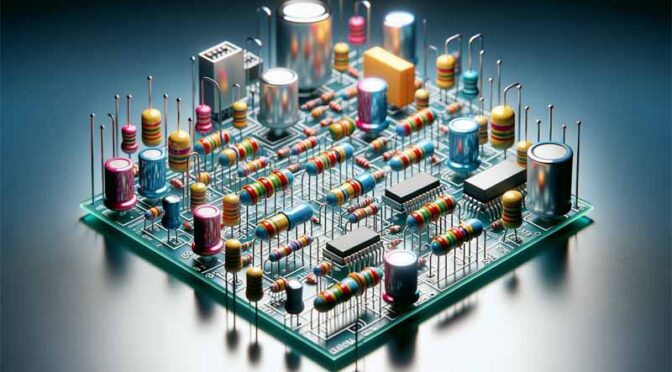This article is based on a video titled “Analog computing will take over 30 billion devices by 2040.” by Freethink. The video gets into the transformative potential of analog computing, a technology that could revolutionize the way we interact with and utilize computing devices by offering a more energy-efficient alternative to the prevalent digital computing systems.
Contents
- The Analog Processor
- The Software-Programmable Analog Processor
- Energy Efficiency
- Practical Applications and Future Implications
- The Landscape of Computing Redefined
- The video
- A Journey Through Time and Utility
The Analog Processor
The video begins by introducing the concept of analog processors, which differ from the digital processors commonly found in today’s computers and smartphones. Unlike digital processors that operate on binary code, analog processors function using waves. This allows them to process information in its raw form, offering the possibility of creating devices that are not only capable of utilizing artificial intelligence and machine learning algorithms but also consume significantly less energy compared to their digital counterparts.
The Software-Programmable Analog Processor
One of the major challenges with analog processors has been their lack of programmability compared to digital processors. The video discusses how Aspinity, a tech company, has overcome this hurdle by developing a software-programmable analog processor. This innovation allows for fine-tuned adjustments, enabling consistent output across different silicon chips. The programmability also means that the signals from sensors connected to these chips don’t need to be converted into binary form, thereby saving energy and increasing efficiency.
Energy Efficiency
The video emphasizes the energy-saving potential of analog computing. Currently, the energy consumption of digital computers is increasing at a rate that outpaces our ability to generate energy. Analog processors could alleviate this issue by reducing the energy required for data conversion. The technology is not intended to replace digital computers entirely but to complement them, allowing for more strategic and efficient use of energy in various applications.
Practical Applications and Future Implications
The video explores several practical applications of analog computing, from extending the battery life of remote controls to more complex uses like monitoring industrial equipment. For instance, analog processors could be used in glass break detectors in cars, allowing for more efficient and accurate detection. The technology could also find applications in healthcare, where analog sensors could monitor heartbeats and other vital signs more efficiently than current digital systems.
The Landscape of Computing Redefined
The video concludes by discussing the broader implications of analog computing. It suggests that the technology could lead to a new computing architecture that allows for more efficient use of resources. This would enable the deployment of more sensing systems in various sectors, from healthcare to industrial monitoring, all while consuming less energy. The technology could also pave the way for the development of new kinds of analog sensors, leading to more personalized and efficient systems.
The video serves as an eye-opener to the untapped potential of analog computing, offering a glimpse into a future where computing is not just faster and more efficient but also more in tune with the natural, analog world around us.
The video
A Journey Through Time and Utility
The following portion of the article aims to shed light on various types of analog computers that have been or are still in use today. While digital computers have become the norm, analog computers have a rich history and continue to offer specialized solutions in certain fields.
Mechanical Analog Computers
One of the earliest forms of analog computers were mechanical in nature. The Antikythera mechanism, dating back to ancient Greece, is a prime example. This complex gear-based device was used for astronomical calculations. Similarly, slide rules served as simple analog computers for quick multiplication and division, widely used by engineers and scientists before the advent of digital calculators.
Electrical Analog Computers
In the early to mid-20th century, electrical analog computers gained prominence. These machines used electrical circuits to solve differential equations and were particularly useful in engineering and physics. They were employed for tasks ranging from calculating missile trajectories to modeling electrical systems.
Fluid Dynamics Analog Computers
Fluid analog computers use the flow of liquid to model and solve problems. These are particularly useful in simulating and analyzing fluid dynamics problems, such as the flow of water in pipes or air over a wing. The MONIAC (Monetary National Income Analogue Computer) used water flow to model economic systems and was used in economics education in the mid-20th century.
Specialized Medical Analog Computers
In the medical field, analog computers have been used for various simulations and data processing tasks. For example, some types of medical imaging equipment use analog computing techniques to process signals from sensors, providing real-time data that is crucial for diagnostics.
Quantum Analog Computers
While quantum computing is often associated with digital systems, there are quantum analog computers that use quantum bits (qubits) to perform computations. These are still largely experimental but hold promise for solving complex problems more efficiently than classical computers.
Contemporary Uses
Today, analog computing techniques are seeing a resurgence in specialized applications. For example, they are used in signal processing, control systems, and even in some types of neural networks for machine learning. The advantage of analog systems in these applications often lies in their energy efficiency and speed for specific tasks.

